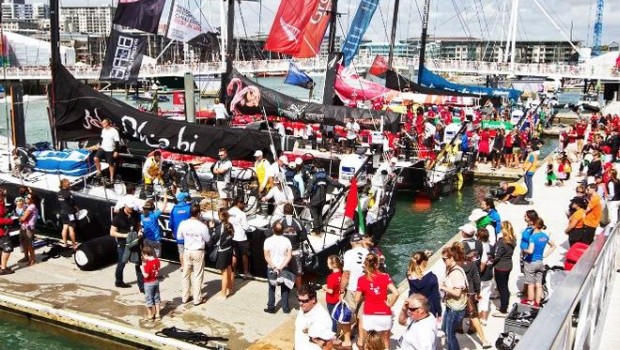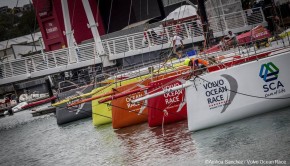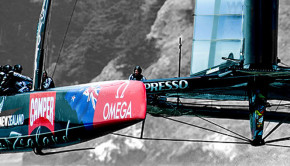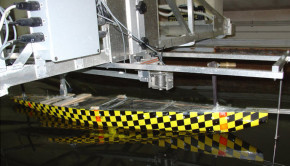From sailors to test pilots – HPYD5 at Volvo Boatyard
Published on March 9th, 2015
Auckland, NZL (March 9, 2015) – The astonishing pace of progress in sailing performance and boat and sail technology was the theme of Burns Fallows’ “Adapting to Change” keynote presentation today at the opening of the 5th High Performance Yacht Design conference in Auckland.
The Head Sail Designer and a Director at North Sails who has headed the sail program at Emirates Team New Zealand for 20 years, Fallow contrasted the incremental change in record times for sports like running and cycling with the explosive growth in sailing performance by small craft and ocean racers.
He was addressing naval architects, engineers, builders, designers and researchers from 15 countries, on hand in the conference room of the Volvo Ocean Race Boatyard for three days of presentations and discussions on the current state of high performance yacht technology.
Fallow offered his own take on Alphonse Karr’s proverb “The more things change, the more they remain the same,” suggesting that when it comes to contemporary boats and technology “The more things change the more they change!”
He cited examples over three or four decades where running sprint records have reduced by 3% and cycling times have lowered by 10%. By comparison, speeds for the 500-metre sailing sprint record have shot up by 81%, and the 24-hour distance record zoomed up 77%.
During the America’s Cup in San Francisco, the Emirates Team New Zealand AC72 foiler hit a blistering 49.987 knots in a brief burst, helped he acknowledged, by a tidal push. That’s 92.57 kilometres an hour (57.52 mph).
“It’s amazing how quickly the extraordinary becomes ordinary,” Fallow said. He remembered the first time the radical new foiler went sailing on the Hauraki Gulf. Six and a half tons of boat popped out of the water and sped foil-borne for 15 minutes. “Our reaction was ‘OK, we’ve done that! What’s the next order of business?’”
Australian John Bertrand who headed his country’s successful 1983 bid for the America’s Cup had sailed with ETNZ in San Francisco. “John said afterwards ‘these guys aren’t sailors, they are test pilots!’”
Noting the progressive change from art to science in boat design and technology, Fallow emphasized that good design practice came as a result of good sailing skills. An example was the way he’d worked with ETNZ jib trimmer Simon Daubney to translate intuitive changes to a precise numerical record.
Looking to the future, and to public interest in sailing, Fallow said the biggest roadblock was cost. America’s Cup campaigns started around $100 million dollars at whatever currency you choose, and on a good day the America’s Cup had attracted 1.5 million viewers. He contrasted that with the recent India vs. Pakistan cricket test match in Adelaide, Australia that chalked up a worldwide audience of one billion.
Competitions like the Med Cup in Europe and the Volvo Ocean Race were examples of cost containment. Glimmers of hope for the future were China, still a sleeping giant when it came to sailing, the continuing strong interest in one-design sailing and the fact that sailing is a highly aspirational pastime.
“I don’t think the curve has flattened out yet,” Fallow predicted.
The conference for those who make it their business to push the performance boundaries of sailing yachts is organized by the Royal Institute of Naval Architects (RINA) NZ and the University of Auckland.
Report by Event Media, Graeme Finch








 We’ll keep your information safe.
We’ll keep your information safe.